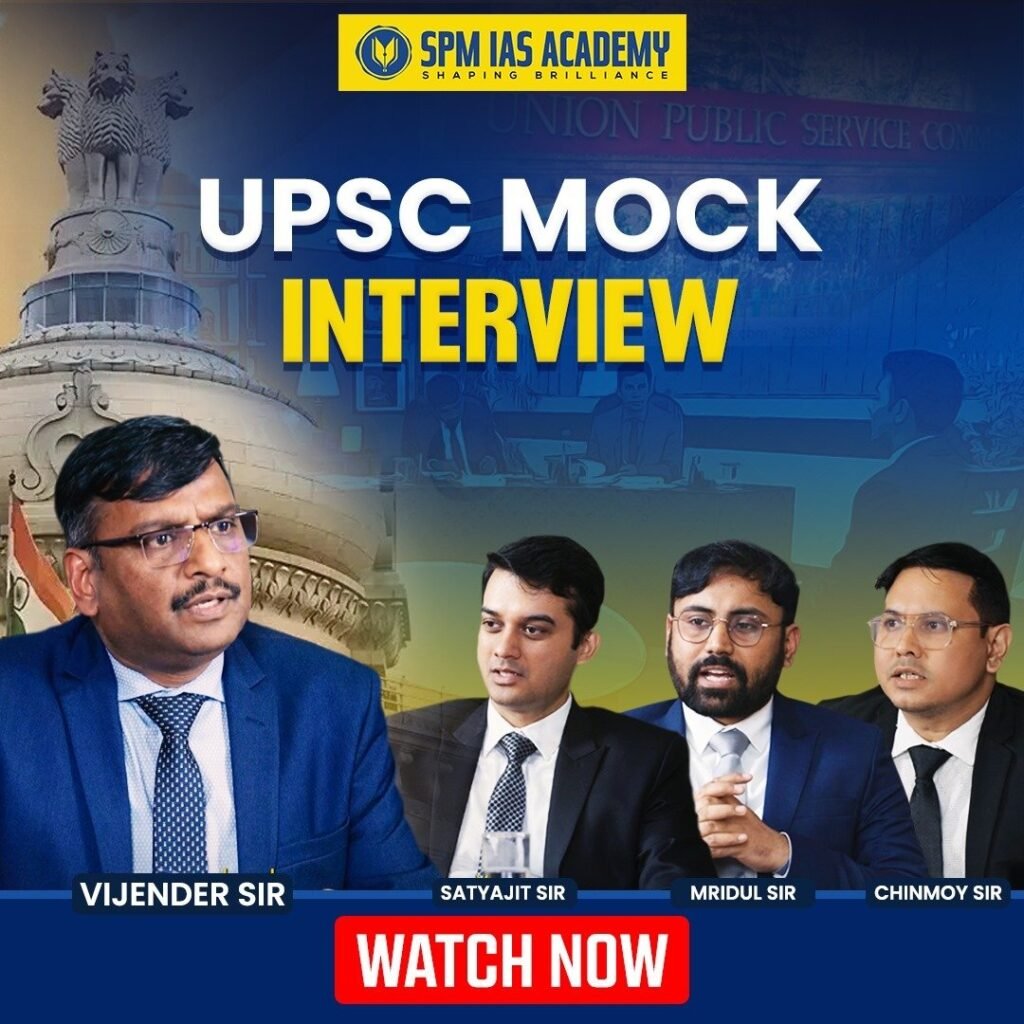Mechanical Engineering in UPSC is a highly specialized optional subject that focuses on the principles of design, analysis, and manufacturing of machines and systems. It covers topics ranging from thermodynamics and fluid mechanics to advanced production technology, making it a crucial discipline for aspirants with an engineering background. Offered as one of the 48 optional subjects in the UPSC Mains Examination, it stands alongside Civil and Electrical Engineering as a preferred choice for candidates aiming to leverage their technical expertise in the exam.
UPSC Mechanical Engineering Syllabus 2026 Overview
Every year, around 150–220 aspirants select Mechanical Engineering as their UPSC optional subject. Interestingly, the success rate remains close to 10%, which makes it a balanced but competitive option. To succeed, candidates must thoroughly understand the UPSC Mechanical Engineering Syllabus 2026 and prepare with a structured plan.
With two papers carrying 250 marks each, totaling 500 marks, the syllabus demands consistency and thorough practice. Yet, its objective nature allows aspirants to score well with the right approach.
| Overview of Mechanical Engineering Syllabus 2025 | |||
| S. No. | UPSC IAS Mains Papers | Subject | Marks |
| 1 | Paper VI | Optional Subject Paper-I | 250 |
| 2 | Paper VII | Optional Subject Paper-II | 250 |
| TOTAL | 500 | ||
| Time Duration | 3 hours | ||
UPSC Mechanical Engineering Syllabus 2026 – Paper I
Paper I of the syllabus covers the fundamental and applied mechanical sciences studied during graduation. It includes:
Paper I Detailed Syllabus
| Section | Topics |
| Mechanics | 1.1 Mechanics of Rigid Bodies Equations of equilibrium in space and their application; first and second moments of area; simple problems on friction; kinematics of particles for plane motion; elementary particle dynamics.1.2 Mechanics of Deformable Bodies Generalized Hooke’s law and its application; design problems on axial stress, shear stress and bearing stress; material properties for dynamic loading; bending shear and stresses in beams; determination of principal stresses and strains-analytical and graphical; compound and combined stresses; bi-axial stresses thin walled pressure vessel; material behaviour and design factors for dynamic load; design of circular shafts for bending and torsional load only; deflection of beam for statically determinate problems; theories of failure. |
| Engineering Materials | Basic concepts on the structure of solids, common ferrous and non-ferrous materials, and their applications; heat-treatment of steels; non-metallic plastics, ceramics, composite materials, and nano-materials. |
| Theory of Machines | Kinematic and dynamic analysis of plane mechanisms. Cams, Gears and epicyclic gear trains, flywheels, governors, balancing of rigid rotors, balancing of single and multi-cylinder engines, linear vibration analysis of mechanical systems (single degree of freedom), Critical speeds and whirling of shafts. |
| Manufacturing Science | Manufacturing Process Machine tool engineering – Merchant’s force analysis: Taylor’s tool life equation; conventional machining; NC and CNC machining process; jigs and fixtures. Non-conventional machining-EDM, ECM, ultrasonic, water jet machining, etc.; application of lasers and plasmas; energy rate calculations. Forming and welding processes-standard processes. Metrology-concept of fits and tolerances; tools and gauges; comparators; inspection of length, position, profile, and surface finish. Manufacturing Management System design: factory location, simple OR models; plant layout-methods based; applications of engineering economic analysis and break-even analysis for product selection, process selection, and capacity planning; predetermined time standards. System planning; forecasting methods based on regression and decomposition, design and balancing of multi-model and stochastic assembly lines; inventory management-probabilistic inventory models for order time and order quantity determination; JIT systems; strategic sourcing; managing interplant logistics. System operations and control: Scheduling algorithms for job shops; applications of statistical methods for product and process quality control, applications of control charts for mean, range, percent defective, number of defects, and defects per unit; quality cost systems; management of resources, organizations, and risks in projects. System improvement: Implementation of systems, such as total quality management, developing and managing flexible, lean, and agile Organizations. |
UPSC Mechanical Engineering Syllabus 2026 – Paper II
The syllabus for Paper II focuses on thermodynamics, energy systems, heat transfer, IC engines, steam engineering, refrigeration, and air conditioning.
Paper II Detailed Syllabus
| Section | Topics |
| Thermodynamics & Gas Dynamics | 1.1 Basic concept of First Law and Second Law of Thermodynamics; concept of entropy and reversibility; availability and unavailability and irreversibility. 1.2 Classification and properties of fluids; incompressible and compressible fluid flows; effect of Mach number and compressibility; continuity, momentum, and energy equations; normal and oblique shocks; one-dimensional isentropic flow; flow of fluids in a duct with frictions that transfer. 1.3 Flow through fans, blowers, and compressors; axial and centrifugal flow configuration; design of fans and compressors; single problem compressors and turbine cascade; open and closed cycle gas turbines; work done in the gas turbine; reheat and regenerators. |
| Heat Transfer | 2.1 Conduction heat transfer —general conduction equation-Laplace, Poisson, and Fourier equations; Fourier law of conduction; one-dimensional steady state heat conduction applied to simple wall, solid, and hollow cylinder and spheres. 2.2 Convection heat transfer —Newton’s law of convection; free and forced convection; heat transfer during laminar and turbulent flow of an incompressible fluid over a flat plate; concepts of Nusselt number, hydrodynamic and thermal boundary layer their thickness; Prandtl number; analogy between heat and momentum transfer, Reynolds, Calbom, Prandtl analogies; heat transfer during laminar and turbulent flow through horizontal tubes; free convection from horizontal and vertical plates. 2.3 Black body radiation —basic radiation laws such as Stefan-Boltzmann, Planck distribution, Wein’s displacement, etc. 2.4 Basic heat exchanger analysis; classification of heat exchangers. |
| IC Engines | 3.1 Classification, thermodynamic cycles of operation; determination of brake power, indicated power, mechanical efficiency, heat balance sheet, interpretation of performance characteristics, petrol, gas, and diesel engines. 3.2 Combustion in SI and CI engines, normal and abnormal combustion; effect of working parameters on knocking, reduction of knocking; Forms of combustion chamber for SI and CI engines; rating of fuels, additives; and emission. 3.3 Different systems of IC engines -fuels, lubricating, cooling, and transmission systems. Alternate fuels in IC engines. |
| Steam Engineering | 4.1 Steam generation —modified Rankine cycle analysis; Modern steam boilers; steam at critical and supercritical pressures; draught equipment; natural and artificial draught; boiler fuels: solid, liquid and gaseous fuels. Steam turbines—Principle; types; compounding; impulse and reaction turbines; axial thrust. 4.2 Steam nozzles —flow of steam in convergent and divergent nozzles, pressure at throat for maximum discharge with different initial steam conditions, such as wet, saturated, and superheated, effect of variation of back pressure; supersaturated flow of steam in nozzles, Wilson line. 4.3 Rankine cycle with internal and external irreversibility; reheat factor; reheating and regeneration, methods of governing; back pressure and pass out turbines. 4.4 Steam power plants —combined cycle power generation; heat recovery steam generators (HRSG) fired and unfired, cogeneration plants. |
| Refrigeration & Air Conditioning | 5.1 Vapour compression refrigeration cycle —cycle on p-H & T-s diagrams; eco-friendly refrigerants—R 134a. 123; Systems like evaporators, condensers, compressors, expansion devices. Simple vapour absorption systems. 5.2 Psychrometry —properties; processes; charts; sensible heating and cooling; humidification and dehumidification; effective temperature; air-conditioning load calculation; simple duct design. |
UPSC Mechanical Engineering Optional PDF 2026
The complete UPSC Mechanical Engineering Syllabus 2026 PDF for both Paper I and Paper II is available in official UPSC notifications. Candidates are advised to download and keep it handy for reference during preparation and revision.
Preparation Strategy for UPSC Mechanical Engineering Optional
To make the most of the UPSC Mechanical Engineering Syllabus 2026, aspirants should:
- Break the syllabus into Paper I and Paper II study plans.
- Revise standard engineering books like PK Nag for Thermodynamics, RS Khurmi for Theory of Machines, and RK Jain for Manufacturing.
- Practice problem-solving daily with past papers and mock tests.
- Focus on diagrams and derivations as they fetch higher marks.
- Maintain a formula sheet for last-minute revision.
- Balance answer writing with conceptual clarity and numerical accuracy.
Conclusion
The UPSC Mechanical Engineering Syllabus 2026 is vast, technical, and highly rewarding for candidates with an engineering background. With its strong focus on mechanics, thermodynamics, energy systems, and manufacturing processes, the subject offers a perfect balance of theory and application. Success depends not only on academic knowledge but also on consistent practice, structured revision, and effective answer writing.
Aspirants who choose this optional should remain consistent, practice previous year papers, and focus on conceptual clarity. With the right preparation strategy, Mechanical Engineering can become a scoring option and help aspirants secure a high rank in the UPSC Civil Services Examination.
Previous Years’ Question Papers
UPSC Mechanical Engineering Syllabus 2026 FAQs
The UPSC Mechanical Engineering Syllabus 2026 is divided into two papers – Paper I and Paper II. Paper I includes Mechanics, Engineering Materials, Theory of Machines, and Manufacturing Science. Paper II includes Thermodynamics, Heat Transfer, IC Engines, Steam Engineering, and Refrigeration & Air Conditioning.
Yes, Mechanical Engineering is a strong optional subject for candidates with an engineering background. It offers a moderate success rate, and with consistent practice, aspirants can score well as questions are often direct and application-based.
Absolutely. Mechanical Engineers can appear for the UPSC Civil Services Examination, and many successful IAS officers come from engineering backgrounds. The optional subject choice depends on personal interest and preparation strategy.
No engineering branch is inherently “best” for UPSC. However, Mechanical, Civil, and Electrical Engineering are popular optional subjects since they align with the UPSC syllabus and allow candidates to use their academic strengths.
Both Computer Science (CSE) and Mechanical Engineering have their own advantages. Mechanical has a clearly defined UPSC syllabus, while CSE is not offered as an optional subject. Therefore, Mechanical Engineering is a more direct choice for engineering aspirants in UPSC.











